According to a survey from LitReactor, short stories typically range from 1,000-7,000 words in length, with flash fiction falling at the shorter end of this spectrum. Source: LitReactor
Table of Contents
-
The Microscopic Narrative Ecosystem
-
The Psychology of Reader Co-Creation
-
Experimental Approaches to Micro-Narrative
-
The Craft of Revision: Distillation vs. Expansion
-
Breaking Boundaries: Advanced Short Short Story Techniques
-
From Concept to Completion: The Flash Fiction Workflow
-
Publication and Platform Considerations
The Microscopic Narrative Ecosystem
I’ve always been fascinated by how much punch a tiny story can pack. Short short stories operate within tight constraints that completely transform how we tell stories. Every single word has to earn its place when you’re working with under 1,000 words – sometimes as few as 100!
Despite these limitations, flash fiction can hit you right in the feels when it’s done right. I’ve found that understanding this miniature ecosystem helps me make better choices about what to include and what to leave to my readers’ imagination when writing a short story.
Flash fiction demands extreme economy of language. I’ve learned that each word needs to perform multiple jobs at once – describing a character while also moving the plot forward and setting the mood. What you leave unsaid becomes just as important as what you include – sometimes more so! The traditional story arc gets completely reimagined when you’re working with such limited word counts, often focusing on just one pivotal moment.
As legendary crime author Lee Child recently shared about his approach to short story writing: “I do short stories always the same, which is, I always put it off until, literally the night before deadline, and do it in one sitting.” This intensity and urgency often creates a unique energy in flash fiction that differs from longer works. Source: CrimeReads
The Economy of Words: Precision as Power
In the world of flash fiction, precision becomes your superpower. I’ve discovered that every word must contribute meaningfully to my story—there’s zero room for fluff or decoration. This extreme economy demands a completely different approach to language than longer forms.
I’ve had to learn to select words with rich connotations that can do the work of entire paragraphs. My favorite practice is systematic word reduction: I’ll draft my story, then remove 25% of words while preserving the core narrative, then remove another 25%. It’s painful but effective! I focus on words that serve multiple functions simultaneously – advancing plot, revealing character, and establishing setting all at once.
According to Jericho Writers, short stories typically range from 1,000-4,000 words (although they can go as high as 15,000 words), making them stories that can be read in a single sitting. This limited space requires extreme precision with language. Source: Jericho Writers
Linguistic Density Through Compression
Rather than using multiple sentences to establish setting or character, I’ve found that short short stories work best with compressed language where single words or phrases carry multiple meanings. I’m always looking for words with rich connotations and cultural associations that can do the work of entire paragraphs.
For example, describing a character as having “prison hands” instantly conveys their past, physical appearance, and potential for violence—all in two words. That’s the kind of efficiency you need when writing a short story.
I’ve learned to identify words that carry multiple layers of meaning through their cultural, historical, or emotional associations. I replace descriptive passages with precisely chosen sensory details that imply broader contexts. Creating character depth through specific action verbs rather than explicit character descriptions saves tons of space.
Consider this flash fiction opening: “She placed the empty frame on the mantel.” In just eight words, this sentence suggests a character who has lost someone (the empty frame), who maintains traditions (the formal placement on the mantel), and hints at a story about absence, memory, and perhaps grief—all without explicitly stating any of these elements.
For more inspiration on creating impactful short stories with minimal words, explore our collection of 20 essential short story examples that demonstrate how master writers achieve maximum impact with concise prose.
Strategic Omission as Narrative Device

I’ve discovered that what you leave unsaid can be more powerful than what you include when learning how to write a short story. You need to practice identifying what readers can reasonably infer without you explicitly telling them.
My favorite exercise is drafting a story, then systematically removing 25% of my words while preserving the core narrative. Then I remove another 25%. It’s brutal but effective! This challenging exercise forces me to identify what’s truly essential to my story and what can be effectively communicated through implication.
I’ve gotten better at identifying narrative elements readers can infer without explicit statement. Creating deliberate gaps invites readers to participate in constructing meaning. Using implication to suggest backstory, relationships, and emotional states without direct exposition saves precious word count.
|
Narrative Element |
Traditional Approach |
Flash Fiction Approach |
|---|---|---|
|
Character Background |
Several paragraphs of backstory |
A single telling detail or action |
|
Setting |
Extended description of environment |
One sensory detail that implies the whole |
|
Emotional States |
Direct description of feelings |
Physical manifestation or reaction |
|
Relationships |
Dialogue and interaction over time |
A single exchange that reveals history |
|
Plot Development |
Sequential scenes building tension |
A pivotal moment implying what came before |
Structural Compression: Narrative Architecture in Miniature
The traditional story arc gets completely reimagined when working with extremely limited word counts. I’ve had to explore alternative structures that deliver complete narrative experiences in minimal space.
Sometimes I focus on a single pivotal moment, other times I create circular narratives where endings connect to beginnings. I’ve even experimented with using physical objects as repositories of implied stories. These approaches help me create short stories that feel complete despite their brevity.
I’ve learned to identify narrative structures that deliver complete experiences in minimal space. Experimenting with non-traditional story shapes maximizes impact while minimizing word count. I’ve also gotten better at mastering techniques that suggest extensive narrative time while focusing on brief moments.
The Single-Moment Magnification Technique
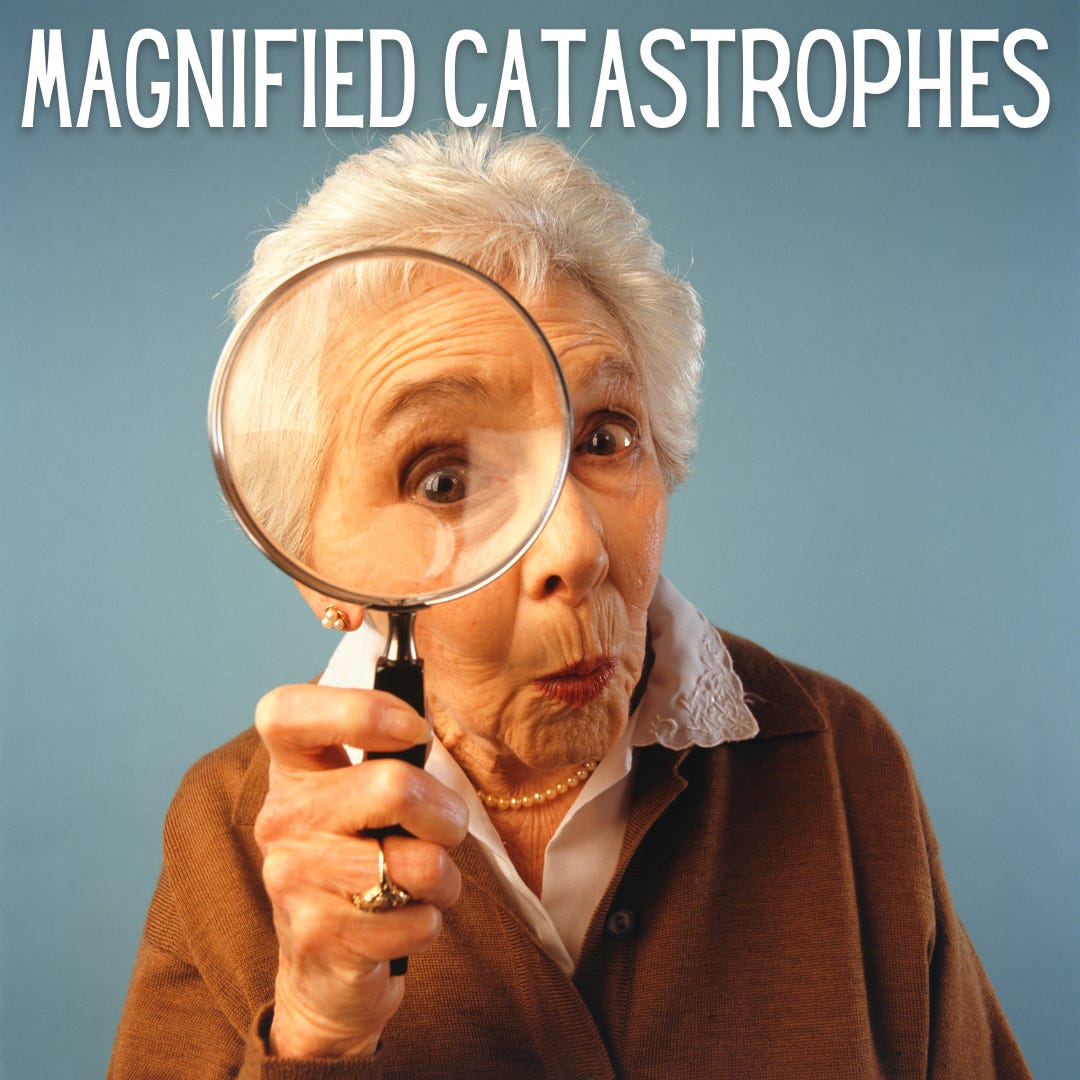
Many of my most successful short short stories focus on a single, pivotal moment rather than attempting to cover extended narrative time. I’ve found it helpful to identify a moment of change, realization, or decision that contains within it implications of past and future.
When I write a story, I try to focus on less than five minutes of narrative time but suggest entire lives before and after this crucial moment. It’s amazing how much you can pack into a tiny window of time!
I select moments that function as narrative fulcrums, where past and future pivot. I’ve developed techniques to imply extensive backstory through minimal present-moment details. Creating endings that suggest continuing consequences beyond the final sentence gives the story a sense of expansiveness despite its brevity.
Narrative Loops and Circular Structures
Circular structures where the ending connects directly to the beginning can create satisfying completeness in minimal space. I love experimenting with first and last sentences that mirror each other but take on different meanings after the reader has experienced the short story between them.
This technique creates a sense of narrative closure while maximizing the impact of your limited word count. It’s like giving the reader a complete experience in a tiny package.
I craft opening lines that can be reinterpreted after reading the full story. Creating endings that echo beginnings but with transformed meaning gives the story a satisfying circularity. Using circular structures suggests continuing cycles beyond the story’s boundaries, giving it a sense of expansiveness.
Implied Narratives Through Objects

Physical objects can serve as compressed repositories of story. I’ve found that a character’s interaction with a meaningful object can suggest relationships, history, and emotional states without explicit exposition.
When story writing, I try writing pieces where an object (a wedding ring, a knife, a photograph) serves as the central focus, revealing the narrative through its history and the character’s relationship to it. This approach creates depth without consuming precious word count.
I select objects with inherent narrative potential and emotional resonance. Developing character through their interactions with significant objects reveals personality without explicit description. Using objects as anchors for implied backstories and relationships creates a sense of history without lengthy exposition.
The Psychology of Reader Co-Creation
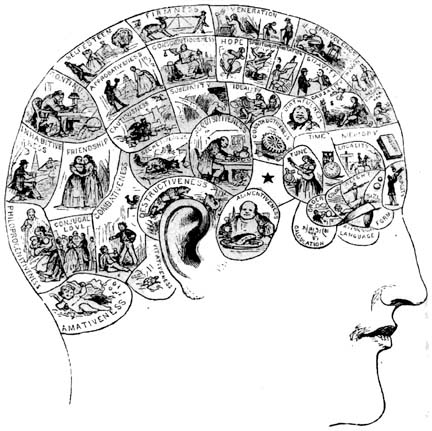
Short short stories rely heavily on readers actively participating in the meaning-making process. I’ve found that the deliberate use of narrative gaps invites readers to fill in missing information, creating deeper engagement and personalized meaning.
Understanding how to engage readers as co-creators is essential to successful short stories. This involves mastering techniques like the iceberg principle, strategic ambiguity, and emotional compression to create stories that resonate far beyond their word count.
Flash fiction succeeds when readers actively participate in constructing meaning. The spaces between words become as important as the words themselves. I’ve learned to trust my readers to fill in the gaps I leave intentionally.
According to the National Centre for Writing, “That’s one of the things I love about short fiction: the amount of work that the author requires of the reader – it becomes a partnership between reader and writer.” This co-creative relationship is particularly crucial in flash fiction where limited word counts necessitate reader participation. Source: National Centre for Writing
Cognitive Gaps: The Space Between the Words
The deliberate use of narrative gaps invites readers to participate in constructing the short story, creating deeper engagement and personalized meaning. I’ve had to master the art of leaving strategic spaces in my narrative that readers will naturally fill with their own interpretations and experiences.
This co-creative process makes flash fiction particularly powerful, as readers become invested in completing the story I’ve begun. They bring their own experiences to the table, making the story uniquely meaningful to them.
I create deliberate narrative gaps that invite reader participation. I’ve developed an understanding of what readers can reasonably infer without explicit telling. Balancing ambiguity and clarity to guide reader interpretation without controlling it completely is a delicate art I’m still perfecting.
When crafting stories with strategic gaps, studying different narrative perspectives can enhance your approach. Our guide on first-person story examples shows how this viewpoint creates immediate intimacy while allowing for carefully controlled information gaps.
The Iceberg Principle in Practice

Hemingway’s iceberg theory—that the dignity of a story’s movement is measured by what’s beneath the surface—reaches its ultimate expression in short short fiction. For every explicit detail I include when learning how to write a short story, I develop at least three implied details that readers must infer.
This creates depth without consuming precious word count and engages readers as active participants in constructing meaning. It’s amazing how much story you can pack below the surface!
For each explicit detail, I develop multiple implied details that readers must infer. I create surface narratives that suggest deeper currents of meaning. Using minimal textual cues to activate readers’ imagination and interpretive faculties makes the story feel much larger than its actual word count.
Strategic Ambiguity as Engagement Tool
Calculated ambiguity can transform a short story from a simple anecdote into a resonant experience. I’ve learned to identify elements of my story where multiple interpretations would enhance rather than confuse the narrative.
I practice creating endings that can be read in two different ways, both equally valid and meaningful, inviting readers to return to my story multiple times. This ambiguity creates a richer reading experience.
I distinguish between productive ambiguity (which deepens meaning) and confusing ambiguity (which frustrates readers). Creating narrative elements that support multiple valid interpretations gives the story depth. Using ambiguous endings that invite readers to reconsider the entire story extends its life beyond the final word.
Emotional Compression: Creating Disproportionate Impact
Short short stories can deliver emotional impacts far greater than their word count suggests through specific psychological techniques. I’ve created powerful emotional experiences by using techniques like emotional reversal, where expectations are subverted in the final lines, or sensory anchoring, where specific physical details create immediate immersion more efficiently than abstract concepts.
I’ve developed techniques to create emotional impacts disproportionate to word count. Focusing on emotional turning points rather than extended emotional development saves space. Using precise sensory details to create immediate emotional immersion connects readers to the story quickly and deeply.
Consider Hemingway’s famous six-word story: “For sale: baby shoes, never worn.” The emotional impact is disproportionate to its length because it implies an entire tragedy without explicitly stating it. The reader must construct the narrative of expectant parents, loss, and grief—creating a more powerful experience than if these elements had been explicitly detailed.
The Emotional Reversal Technique
One of the most effective structures for short short stories involves setting up an expectation and then subverting it in the final lines. This creates an emotional pivot that resonates beyond the page.
When learning how to write a good short story, I practice writing stories where the last sentence forces readers to reinterpret everything they’ve just read, creating a powerful emotional impact that lingers long after reading. These reversals make the story memorable.
I establish clear expectations early in the narrative. Planting subtle cues that support the eventual reversal without telegraphing it maintains surprise. Creating final lines that force readers to reconsider their understanding of the entire story gives the piece lasting impact.
Sensory Anchoring for Immersive Brevity
Specific sensory details create immediate immersion more efficiently than abstract concepts. Rather than stating a character is afraid, I describe the metallic taste in their mouth and their fingers going numb.
In a short story, I limit myself to just one or two sensory details that do double or triple narrative work, creating immediate emotional connection while also revealing character and advancing plot. This efficiency is essential in flash fiction.
I select sensory details that create immediate emotional resonance. Using physical sensations to imply emotional states without naming them saves word count. Limiting sensory details to those that serve multiple narrative functions simultaneously ensures every word earns its place.
Experimental Approaches to Micro-Narrative

The constraints of short short stories have led me to discover innovative structural and stylistic experiments that push the boundaries of traditional storytelling. These experimental approaches offer fresh techniques for writers willing to take creative risks.
By exploring structural innovations like fragmentation and list stories, or playing with genre subversion through micro-genre fusion and metafictional techniques, I’ve discovered new ways to maximize the impact of minimal word counts when writing a short story.
Constraints often spark innovation, leading to new narrative forms. I’ve found that experimental approaches can solve the unique challenges of extreme brevity. Some of my most successful flash fiction pieces came from embracing unconventional structures.
Writers looking to push boundaries in their flash fiction can benefit from exploring unconventional storytelling techniques that challenge traditional narrative structures and create fresh, memorable reading experiences.
Form as Content: Structural Innovations
The extreme brevity of short short stories has inspired formal experiments where the structure itself becomes part of the storytelling. I’ve explored techniques like fragmentation, where breaking a story into titled segments creates a mosaic effect, or list stories, where the progression of seemingly disconnected items reveals character and plot.
These structural innovations allow me to tell complete stories in ways that traditional narrative approaches might not accommodate within such tight constraints when story writing. The form becomes part of the content.
I explore structures where form itself contributes to meaning. Using non-traditional formats creates narrative efficiency. Experimenting with structures that create meaning through arrangement and juxtaposition allows me to tell more complex stories in limited space.
Fragmentation and Mosaic Narratives

Breaking a short story into titled segments or numbered fragments can create a mosaic effect where the spaces between sections carry narrative weight. I’ve tried writing a 500-word story broken into five 100-word segments, each with its own title that adds meaning to the section.
This fragmented approach allows me to cover more narrative ground while creating meaningful connections between seemingly disconnected moments. The gaps between fragments become part of the story.
I create titled segments that function both independently and as part of a larger whole. Using the spaces between fragments to suggest narrative connections adds depth. Developing titles that add additional layers of meaning to each segment maximizes the impact of limited word count.
List Stories and Inventories
Stories structured as lists, inventories, or catalogs can efficiently deliver narrative through accumulation of seemingly disconnected items. I’ve experimented with telling a complete story through a character’s to-do list, a collection of objects found in a drawer, or a series of text messages—letting the progression and selection of items reveal character and plot without traditional narrative exposition.
I select list formats that naturally suggest character and narrative. Using progression and arrangement to create narrative movement gives the story a sense of development. Developing items that reveal character and relationship through selection and description creates depth without explicit exposition.
Genre Subversion in Miniature
The compressed nature of short short stories allows for playful experimentation with genre expectations and conventions. I’ve explored techniques like micro-genre fusion, where elements from different genres combine in surprising ways, or metafictional approaches that acknowledge the story’s own fictional status.
These subversive techniques create fresh narrative experiences that maximize the impact of minimal word counts when I write a story. They keep readers engaged by surprising them.
I use genre conventions as shorthand to establish context efficiently. Subverting genre expectations creates surprise and freshness. Combining elements from different genres creates new narrative possibilities that wouldn’t work in longer forms.
Micro-Genre Fusion
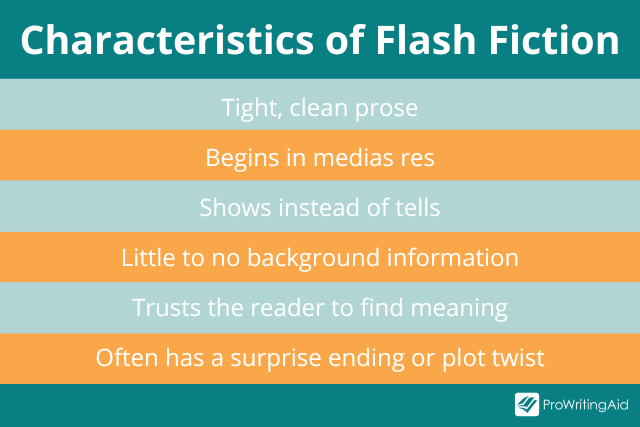
Combining elements from different genres in the compressed space of a short short story can create surprising juxtapositions and fresh narrative experiences. I’ve tried writing a story that begins as one genre (horror, romance, science fiction) and transforms into another by the end, using the brevity of the form to make the transition feel natural rather than jarring.
This fusion approach creates unique short stories that defy easy categorization. They surprise readers in satisfying ways.
I identify essential signifiers of different genres that can be efficiently deployed. Creating smooth transitions between genre elements within extremely limited space is challenging but rewarding. Using genre fusion to create surprising emotional effects and fresh perspectives keeps my flash fiction feeling innovative.
Metafictional Miniatures
Self-referential stories that acknowledge their own fictional status can be particularly effective in short short form. I’ve experimented with stories that comment on their own creation or reading, breaking the fourth wall in ways that add meaning rather than merely being clever.
When I write a story, I sometimes have the narrator address the constraints of the short short story form itself, turning limitation into a thematic element. This self-awareness can create interesting layers of meaning.
I use self-reference to create additional layers of meaning. Developing narrators who acknowledge the constraints of the form makes the limitations thematic. Creating metafictional elements that contribute to thematic depth rather than mere cleverness gives the story substance.
The Craft of Revision: Distillation vs. Expansion
The revision process for short short stories differs significantly from longer forms, requiring specialized techniques to refine and concentrate narrative material. Rather than simply cutting excess, effective revision involves transforming the text to maximize its communicative efficiency.
This might mean distilling language through word-level density auditing and sentence fusion, or strategically expanding certain elements to strengthen the emotional core of my short stories. I’ve learned that revision is about transformation, not just reduction.
Revision for flash fiction requires specialized approaches beyond simple cutting. The goal is maximum narrative efficiency rather than brevity for its own sake. I focus on making every word count multiple times.
Distillation: Beyond Simple Cutting
Effective revision of short short stories involves not just removing words but transforming the text to maximize its communicative efficiency. I’ve developed systematic approaches to evaluating every word for its narrative contribution and looking for opportunities to combine multiple sentences into more complex, information-dense constructions.
This distillation process helps me create short stories where every element serves multiple narrative functions. It’s about quality, not just quantity.
I’ve developed systematic approaches to evaluating narrative efficiency. Transforming text rather than simply reducing it creates more powerful stories. Focusing on maximizing the work each word performs ensures nothing is wasted.
Consider these revisions to a flash fiction opening: Original (19 words): “John walked slowly across the empty parking lot. He was tired after his long shift at the hospital.” Revised (11 words): “John’s scrubs dragged across the empty parking lot after his double shift.” The revision reduces word count by 42% while adding information (his profession) and implying his exhaustion rather than stating it directly.
Word-Level Density Auditing
Systematically evaluating every word for its narrative contribution has improved my flash fiction immensely. I create a revision process where I highlight words in different colors based on their function: advancing plot, revealing character, establishing setting, creating mood, etc.
Words that serve multiple functions stay in my short story; single-function words become candidates for replacement with more efficient alternatives that can do double or triple duty. This visual approach helps me see which words are pulling their weight.
I categorize words by their narrative function. Prioritizing words that serve multiple functions simultaneously makes the story more efficient. Replacing single-function words with more efficient alternatives increases narrative density without adding length.
|
Word Function Audit |
Description |
Example |
Revision Strategy |
|---|---|---|---|
|
Plot-advancing |
Moves the story forward |
“She opened the letter” |
Keep if essential to plot progression |
|
Character-revealing |
Shows personality or traits |
“nervously” |
Replace with action that shows nervousness |
|
Setting-establishing |
Creates sense of place |
“in the dusty attic” |
Combine with action (“dust clouded as she stepped”) |
|
Mood-creating |
Sets emotional tone |
“ominously” |
Replace with concrete detail that creates same mood |
|
Multi-function |
Serves 2+ purposes |
“His prison hands trembled” |
Prioritize these words during revision |
|
Zero-function |
Adds no narrative value |
“very,” “really,” “just” |
First candidates for deletion |
Sentence Fusion and Compression
I look for opportunities to combine multiple sentences into more complex, information-dense constructions. Rather than viewing complex sentences as less readable, I recognize their value in flash fiction for delivering multiple narrative elements simultaneously.
This fusion technique allows me to pack more story into fewer words without sacrificing clarity or impact in my short story. It’s about efficiency, not simplicity.
I identify sentences that can be combined without losing clarity. Using complex sentence structures to deliver multiple narrative elements simultaneously increases narrative density. Employing punctuation strategically to create information-dense constructions makes every character count.
The Paradox of Expansion in Brevity
Sometimes the path to a stronger short short story involves strategic expansion of certain elements rather than universal reduction. I might need to add words to the emotional core of my story while cutting elsewhere, or craft titles that do significant narrative work without consuming my main word count.
This paradoxical approach recognizes that effective brevity comes from strategic choices about what to emphasize when learning how to write a short story, not just ruthless cutting. Sometimes adding is more effective than subtracting.
I recognize when strategic expansion strengthens overall narrative efficiency. Focusing on quality of impact rather than quantity of words improves the reading experience. Using expansion selectively to enhance the story’s emotional core creates more powerful stories.
Targeted Amplification
I identify the emotional or thematic core of my story and consider expanding this central element while cutting peripheral details. Sometimes adding three perfect words to the emotional climax while cutting ten unnecessary words elsewhere creates a stronger short story overall.
This targeted approach ensures that my story’s most important moments receive the space they need to create maximum impact. The emotional heart gets room to breathe.
I identify the emotional or thematic heart of my story. Expanding crucial moments while reducing peripheral elements creates focus. Focusing amplification on moments of highest emotional impact ensures the story resonates with readers.
Title as Narrative Extension
In short short stories, titles can do significant narrative work, effectively adding content without consuming the main word count. I craft titles that establish context, introduce characters, hint at backstory, or even deliver the story’s twist or punchline, allowing the main text to focus on other aspects of the narrative.
When story writing, a well-crafted title can effectively add 10-20% more narrative content to your story. It’s free real estate!
I craft titles that perform specific narrative functions. Using titles to establish context that would otherwise require valuable word count saves space. Considering titles that work in conversation with the ending to create additional meaning adds depth to the story.
Breaking Boundaries: Advanced Short Short Story Techniques

The most effective short short stories operate on multiple narrative levels within extremely confined spaces, creating reading experiences that transcend their minimal word counts. Advanced techniques like temporal manipulation and transformative language choices have helped me break boundaries in my flash fiction.
By understanding how to compress time, expand micro-moments, and select words with maximum resonance, I’ve created short stories that feel much larger than their actual word count. These techniques take practice but are worth the effort.
Advanced flash fiction operates on multiple narrative levels simultaneously. The most effective techniques create stories that feel larger than their actual word count. I’m constantly pushing the boundaries of what’s possible in this compressed form.
Temporal Manipulation in Confined Spaces
The compressed nature of flash fiction offers unique opportunities to play with time in ways that would be unwieldy in longer forms. I’ve used techniques like chronological disruption to deliver backstory and character development with remarkable economy, or focused on expanding micro-moments to cover vast temporal territory within a few hundred words.
These temporal manipulations allow me to create short stories that feel much larger than their actual word count. They give the story a sense of expansiveness despite its brevity.
I explore non-linear narratives as efficiency tools rather than mere stylistic choices. Using focused moments of perception to compress extensive time periods creates temporal density. Developing techniques for suggesting past and future beyond the story’s immediate timeframe expands the story’s scope.
In Lee Child’s recent collection of short stories titled “Safe Enough,” he notes that the compressed format allows for “no inhibition, no restraint,” creating a liberating experience compared to novel writing where “you’re always aware that whatever you’re doing today there is masses ahead of you.” This freedom in temporal approach is particularly valuable in flash fiction. Source: CrimeReads
Chronological Disruption as Efficiency Tool
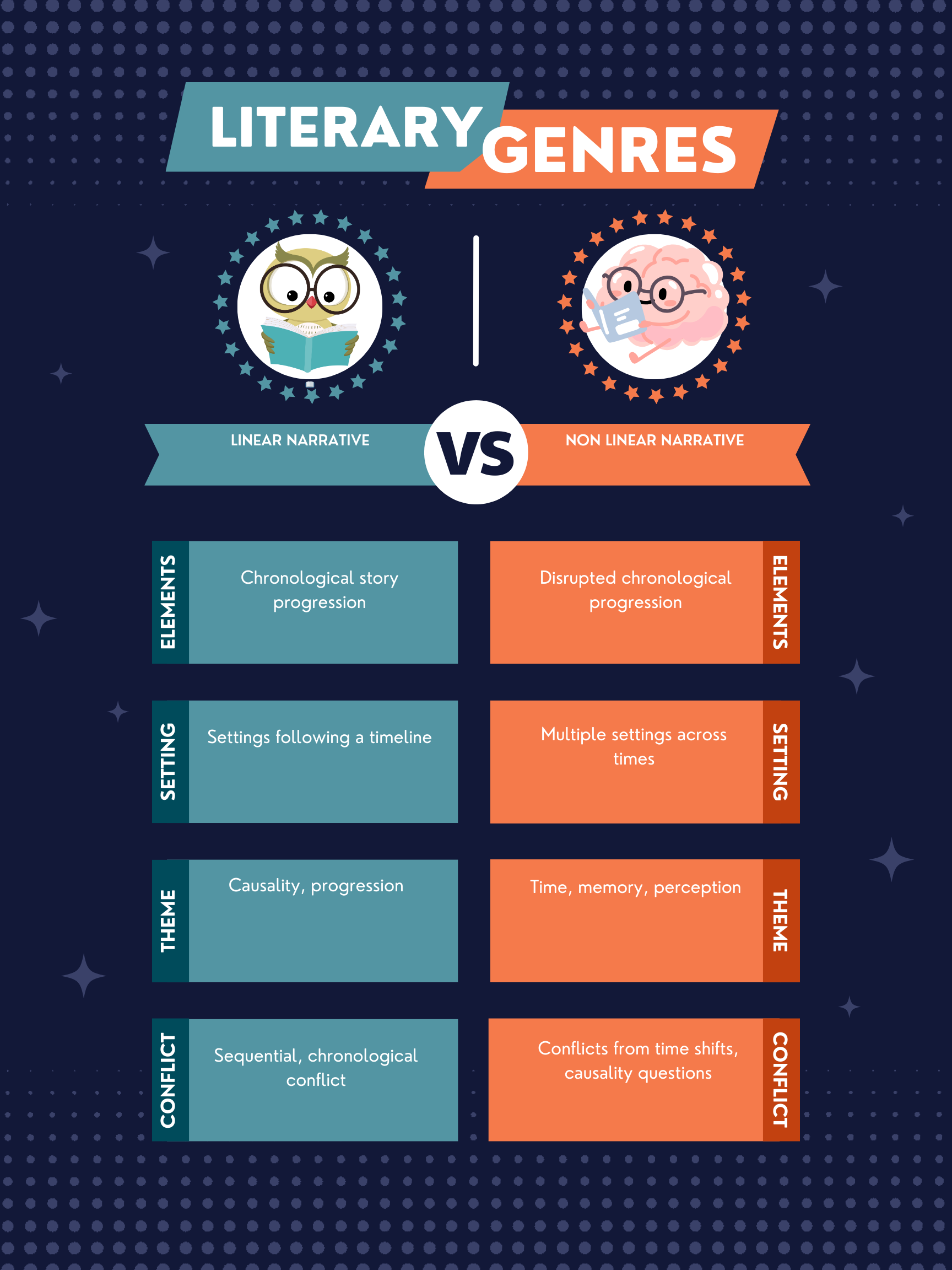
Non-linear narratives can deliver backstory, foreshadowing, and character development with remarkable economy. I’ve experimented with beginning my short story at its emotional climax, then moving backward or forward in time to provide context.
This approach eliminates the need for extended build-up while immediately engaging readers emotionally and allowing me to cover more narrative ground within tight word constraints. It’s efficient and engaging.
I begin stories at moments of high emotional intensity rather than chronological beginnings. Using temporal jumps to eliminate the need for extended exposition saves word count. Creating juxtapositions between different time periods to reveal character development efficiently adds depth without length.
Temporal Expansion of Micro-Moments
Extremely brief stories can cover vast temporal territory by focusing on moments of extreme consciousness or perception. I practice writing stories where a split-second decision or realization becomes the lens through which an entire life is examined, allowing me to compress decades into a few hundred words.
When I write a story using this technique, it creates a sense of expansiveness within the tight constraints of flash fiction. A moment becomes a lifetime.
I identify moments of heightened perception that can serve as windows to larger timeframes. Using sensory details to create a sense of time slowing or expanding gives the moment weight. Developing techniques for suggesting entire lives through single moments of consciousness creates temporal density.
Linguistic Alchemy: Transformative Language Techniques

The language of short short fiction often operates differently than in longer forms, demanding heightened attention to the transformative potential of specific linguistic choices. I’ve developed a personal lexicon of high-impact words that carry disproportionate cultural, emotional, or sensory weight, and explored how syntactical disruption can create powerful emotional effects while conserving word count.
I’ve developed heightened awareness of words’ connotative and associative dimensions. Creating personal lexicons of high-impact words relevant to my thematic territory gives me a toolbox of efficient language. Exploring how grammatical choices can create emotional effects without explicit commentary saves valuable word count.
To enrich your flash fiction with cultural depth, consider studying traditional storytelling forms that pack maximum meaning into minimal space through archetypal characters and symbolic language.
Resonant Frequency Word Selection
Certain words carry disproportionate cultural, emotional, or sensory weight that can be leveraged to create narrative shortcuts. I’ve developed a personal lexicon of high-impact words that resonate with multiple meanings in my thematic territory.
When writing a short story or learning how to write a good short story, I consider how terms like “inheritance,” “threshold,” or “scar” might instantly evoke complex relationships and histories without explicit explanation, allowing me to pack maximum meaning into minimum space. These words do heavy lifting.
I identify words with rich cultural, historical, or emotional associations. Developing awareness of how specific words resonate differently with different readers helps me choose wisely. Creating collections of high-impact words relevant to my common themes and subjects gives me a toolbox of efficient language.
Syntactical Disruption for Emotional Effect
The deliberate violation of grammatical expectations can create powerful emotional effects while conserving word count. I experiment with sentence fragments, run-ons, or unexpected shifts in perspective at pivotal moments to mirror characters’ emotional states or signal important narrative turns without explicit commentary.
These disruptions can create immediate emotional impact in my short story without requiring additional explanatory text. The form mirrors the content.
I use sentence fragments to create immediacy or emotional intensity. Employing run-on sentences to suggest overwhelming experiences or stream of consciousness mimics thought patterns. Creating perspective shifts that mirror character realizations or emotional changes adds depth without explanation.
From Concept to Completion: The Flash Fiction Workflow

The practical process of creating effective short short stories requires specialized approaches to ideation, drafting, and revision. I spark creativity through generative constraints like the single-sentence expansion method or the subtraction draft approach.
The finishing touches for flash fiction also demand particular attention to elements like sonic architecture and reader comprehension that might seem minor in longer works but become critical in compressed narratives when story writing. These details make all the difference.
I’ve developed specialized workflows designed specifically for flash fiction. Using constraints as creative catalysts rather than limitations has improved my writing immensely. The structure helps me focus my creativity.
Generative Constraints: Creative Catalysts
Paradoxically, imposing additional limitations has sparked my creativity and prevented the paralysis that sometimes accompanies the already tight constraints of the form. I try methods like beginning with a complete story compressed into a single sentence, then methodically expanding it, or writing without concern for length and then systematically removing specific elements.
These structured approaches help maintain narrative focus while encouraging creative solutions to the challenges of extreme brevity when writing a short story. The constraints become opportunities.
I use additional constraints to spark creativity rather than limit it. Developing structured approaches to generating and refining flash fiction gives me a process to follow. Creating methodical processes for distilling narrative to its essential elements ensures nothing important is lost.
Consider this exercise: Write a complete 50-word story where the first and last words must be the same, and the story must include a color, a sound, and an object that fits in a pocket. These seemingly arbitrary constraints force creative problem-solving and often result in surprisingly cohesive narratives that might not have emerged from a completely open-ended prompt.
The Single-Sentence Expansion Method
I begin with a complete story compressed into a single sentence that contains a character, conflict, and resolution. Then I methodically expand this sentence into a paragraph, and finally into a complete flash piece, maintaining the core narrative DNA throughout.
When I write a story this way, it prevents narrative sprawl while ensuring my story retains a coherent central focus, helping me create flash fiction that feels complete despite its brevity. The DNA remains intact.
I craft single sentences that contain complete narrative arcs. Expanding methodically while maintaining narrative focus keeps the story coherent. Using this approach to ensure coherence in extremely brief stories prevents them from feeling fragmentary.
The Subtraction Draft Approach
I write my first draft without concern for length, then create subsequent drafts by removing specific elements: first adverbs, then adjectives, then all exposition, and finally any dialogue that doesn’t advance multiple narrative functions simultaneously.
This systematic reduction forces me to evaluate what’s truly essential to my short story and helps me discover the most efficient ways to communicate my narrative. It’s like sculpting – removing everything that isn’t the story.
I create initial drafts without word count constraints. Removing elements systematically rather than randomly makes the process methodical. Using this process to discover what’s truly essential to my story reveals its core.
Finishing Touches: The Art of the Final Pass

The concluding revision phase for short short stories requires specialized attention to elements that might seem minor in longer works but become critical in compressed narratives. I pay particular attention to the sonic qualities of my language, ensuring that rhythm and sound patterns guide readers through emotional shifts, and test my story with fresh readers to ensure my narrative gaps are productive rather than confusing.
I’ve developed heightened awareness of elements that become critical in extremely brief narratives. Paying particular attention to opening and closing sentences ensures strong entry and exit points. Creating processes for testing reader comprehension without explaining more maintains the story’s efficiency.
Sonic Architecture and Rhythm Mapping
In extremely brief narratives, the sonic qualities of language take on heightened importance. I read my short story aloud, mapping its rhythmic patterns and sound progressions. The musicality of my prose can guide readers through emotional shifts and emphasize key moments without requiring additional words.
I pay particular attention to my opening and closing sentences, ensuring their sound patterns create appropriate entry and exit experiences. The music of the language becomes part of the meaning.
I read stories aloud to identify rhythmic patterns and sound progressions. Using sonic qualities to guide readers through emotional shifts creates emotional flow. Creating opening and closing sentences with particularly strong sonic qualities bookends the story effectively.
The Stranger Test
Before finalizing my story, I have someone unfamiliar with my intentions read it and then immediately tell me what they believe happened. This reveals whether my narrative gaps are productive (allowing for meaningful interpretation) or confusing (creating barriers to engagement).
When story writing, I use this feedback not to explain more, but to adjust my strategic ambiguities to better guide reader interpretation toward my intended effect. It’s about clarity, not explanation.
I test stories with readers unfamiliar with my intentions. Focusing on comprehension rather than preference or enjoyment reveals what’s working. Using feedback to adjust strategic ambiguities rather than explain more maintains the story’s efficiency.
Publication and Platform Considerations for Flash Fiction
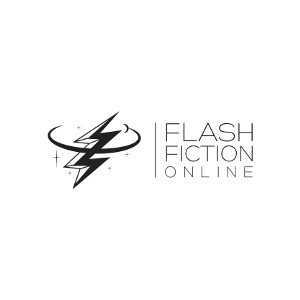
The unique characteristics of short short stories create distinct opportunities and challenges when seeking to share your work with readers. Different digital platforms offer various possibilities for flash fiction, each with their own audience expectations and presentation requirements.
I’ve explored flash-specific literary journals and contests, and considered how my individual short stories might work together in collections that create additional meaning through thoughtful arrangement. Finding the right home for your flash fiction is crucial.
Different platforms offer unique opportunities for flash fiction. Flash fiction has specialized publication venues with specific requirements. Understanding these differences helps me target my submissions effectively.
Digital Ecosystems and Flash Fiction Formats
The digital media landscape offers various platforms particularly well-suited to flash fiction, each with different audience expectations and presentation requirements. I’ve explored social media-native flash fiction with its platform-specific constraints and conventions, and experimented with multimedia approaches that integrate visual elements with my text.
These digital ecosystems offer new possibilities for sharing my short story work and connecting with readers interested in brief, powerful narratives. The digital world has created new opportunities for flash fiction.
I explore platforms specifically suited to extremely brief narratives. Understanding the unique constraints and opportunities of each digital ecosystem helps me tailor my work appropriately. Considering how digital presentation affects reader experience of flash fiction influences my formatting choices.
Social Media-Native Flash Fiction
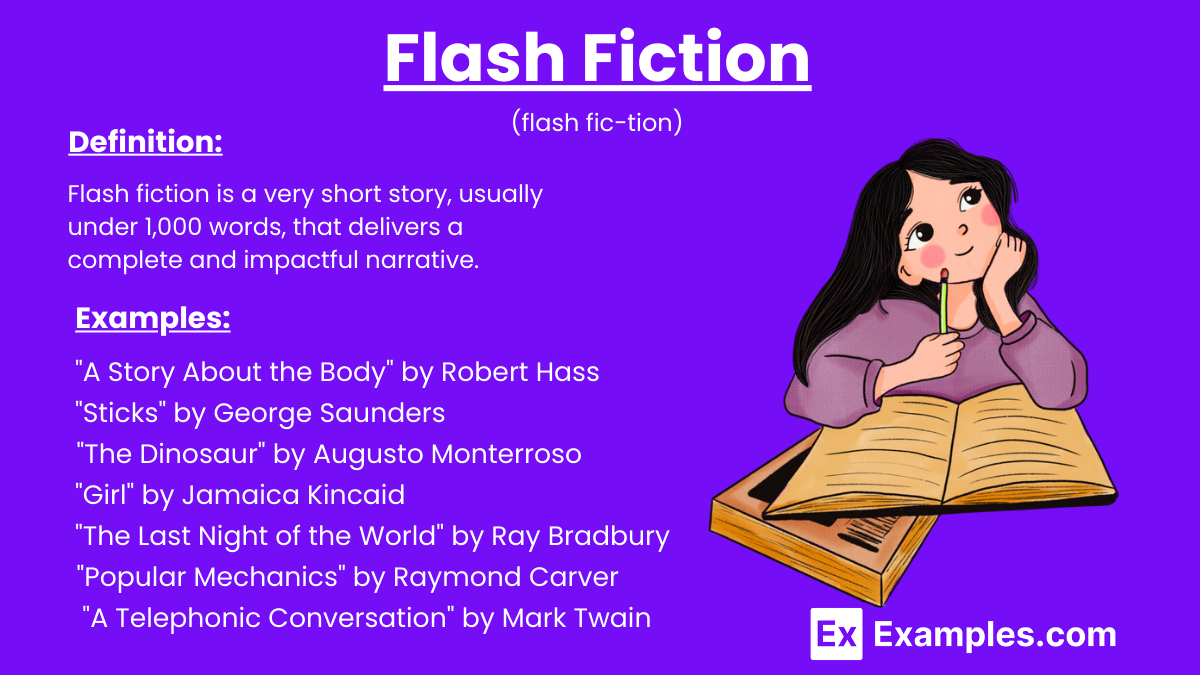
Platforms like Twitter/X have spawned entire micro-fiction communities with their own conventions and constraints. I study the particular qualities of successful platform-native flash fiction, noting how writers use the specific affordances of each medium (character limits, threading capabilities, embedded media) to enhance their storytelling rather than simply working around limitations.
These platforms help me find readers and connect with other short story writers. The constraints become part of the creative process.
I study successful platform-native flash fiction to understand its unique qualities. Using platform-specific features to enhance storytelling rather than limit it creates more effective pieces. Connecting with flash fiction communities on social media platforms provides valuable feedback and support.
Multimedia Flash: Integrating Visual Elements
I consider how visual components might complement my text without redundancy. Unlike illustrated longer works, the most effective multimedia flash pieces create meaning at the intersection of text and image, where neither element tells the complete story alone.
When I write a story with visual elements, I experiment with pieces where a single image and minimal text create a narrative experience greater than the sum of its parts, expanding the possibilities of flash fiction beyond pure text. The visual and textual elements work together.
I create relationships between text and image where neither is complete alone. Using visual elements to replace textual description saves valuable word count. Experimenting with different text-image relationships to find what works best for my stories improves their impact.
For writers interested in exploring visual storytelling alongside text, our guide to AI story generators with pictures can help you create compelling multimedia flash fiction pieces that combine visual and textual elements effectively.
Finding Your Flash Fiction Audience
The specialized nature of flash fiction requires targeted approaches to connect with appropriate readers and publication venues. I’ve explored flash-specific literary journals and contests that focus exclusively on this form, often with specific word count requirements and thematic interests.
I’ve also considered how my individual short story pieces could work together in collections that create additional resonance through thoughtful arrangement. Finding the right audience makes all the difference.
I identify venues specifically interested in flash fiction. Researching publication requirements before submitting work saves time and increases chances of acceptance. Considering how individual pieces might work together in collections creates additional value.
Flash-Specific Literary Journals and Contests
Numerous publications and competitions focus exclusively on flash fiction, often with specific word count requirements and thematic interests. I research venues like SmokeLong Quarterly, Flash Fiction Online, or the Bath Flash Fiction Award, noting their published pieces’ characteristics and editorial preferences before submitting my work.
These specialized venues offer opportunities to connect with readers who specifically appreciate the unique qualities of short stories and help me learn how to write a short story more effectively. They understand and value the form.
I research flash-specific venues to understand their preferences and requirements. Studying published pieces to understand what each venue values helps me target my submissions. Targeting submissions to venues that publish work similar to mine increases chances of acceptance.
Building Flash Fiction Collections
While individual flash pieces work as standalone experiences, they can gain additional resonance when thoughtfully arranged in collections. I experiment with organizing my stories to create thematic progressions, recurring motifs, or subtle narrative connections that emerge only when the pieces are read together, creating a meta-narrative greater than any single story.
These collections help me reach readers looking for more sustained engagement with my story writing. The whole becomes greater than the sum of its parts.
I arrange individual pieces to create additional meaning through juxtaposition. Developing thematic progressions or recurring motifs across collections creates cohesion. Creating collections that offer more sustained engagement while maintaining the power of brevity gives readers a more complete experience.
Final Thoughts
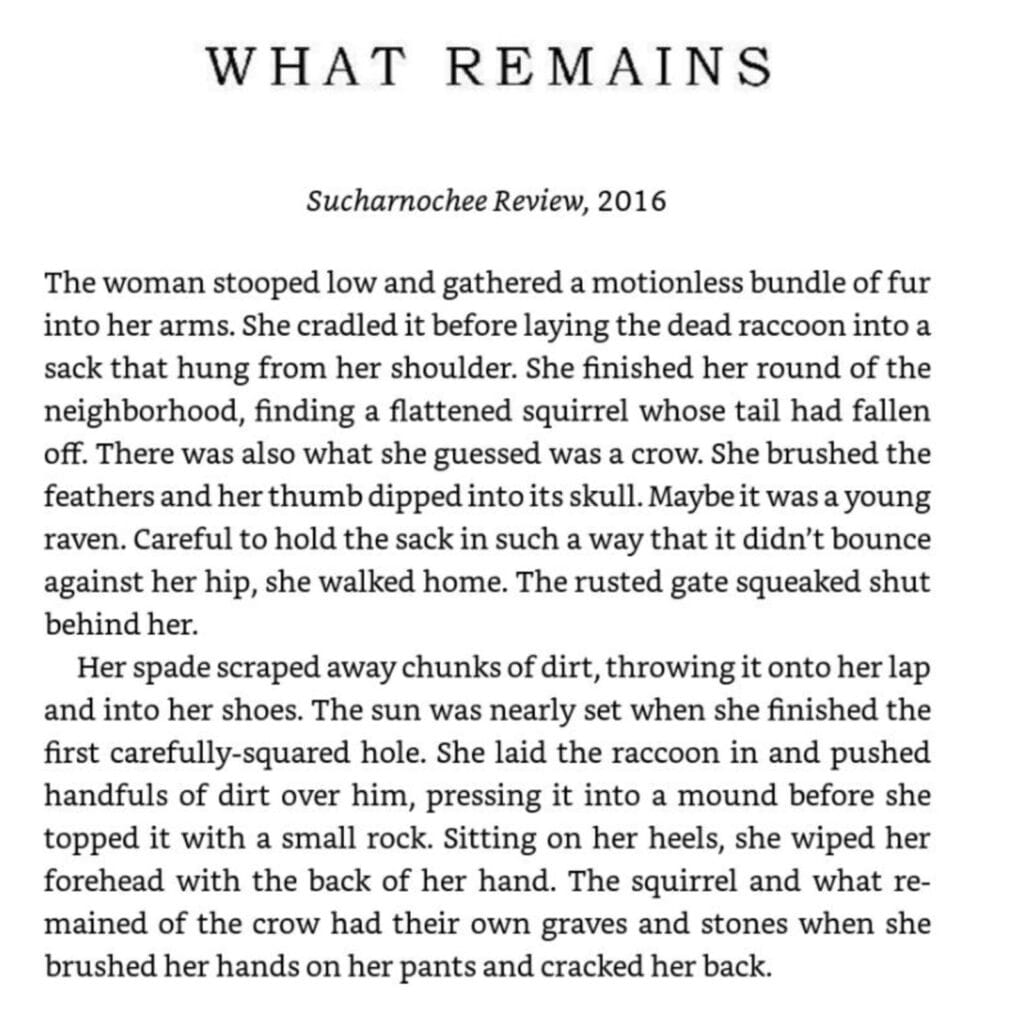
Mastering the art of short short story writing requires practice, precision, and a willingness to trust your readers. The extreme constraints of this form have actually liberated my creativity, forcing me to find innovative solutions and discover the essential core of my narratives.
As I continue developing my short story skills, I remember that tools like Nairrate’s AI story generator can help overcome specific challenges in the creative process. Whether I’m struggling with crafting the perfect opening line, finding that precise word that does triple duty, or developing an ending with just the right amount of ambiguity, Nairrate provides fresh perspectives and alternative approaches. The journey of how to write a short short story is one of continuous refinement—each story teaching me something new about the power of precision and the art of meaningful omission.
The constraints of flash fiction can become creative catalysts rather than limitations. Developing your skills in this form will strengthen your writing across all formats. Tools like Nairrate can help overcome specific challenges in the flash fiction writing process.
Ready to transform your flash fiction writing? Try Nairrate today and discover how our AI story generator can help you craft powerful short short stories that resonate with readers long after the final word.
The Reader’s Cognitive Architecture

Understanding how readers process and complete narrative information allows me to strategically leverage psychological principles in my flash fiction. Readers bring existing narrative frameworks to every story, which I can use to suggest complete narratives with minimal textual cues.
By activating genre expectations and cultural reference points, I create short stories that feel complete despite their brevity. The reader’s mind becomes part of my storytelling toolkit.
Readers automatically fill in narrative gaps based on their existing knowledge. Strategic use of familiar frameworks allows me to suggest more story than I explicitly tell. Understanding cognitive processing helps me create stories that feel complete despite brevity.
Narrative Scaffolding and Schema Activation
Readers bring existing narrative frameworks to every story they read. I exploit these pre-existing mental structures to suggest complete narratives with minimal textual cues.
By using genre shorthand and cultural reference points, I activate entire networks of assumptions and expectations in my readers’ minds, allowing me to create short stories that feel much fuller than their actual word count. The reader’s knowledge becomes part of my story.
I identify the minimum signifiers needed to activate helpful narrative frameworks. Using readers’ existing knowledge to fill in background without explicit text saves word count. Creating stories that feel complete by activating appropriate mental schemas makes them feel expansive despite their brevity.
Genre Shorthand and Expectation Frameworks
Familiar genre elements function as narrative shorthand, allowing readers to fill in substantial background without explicit text. A single reference to “the crime scene” or “the spaceship’s warning lights” activates entire networks of assumptions and expectations.
I identify the minimum signifiers needed to invoke the genre frameworks that support my short story narrative, saving valuable word count while creating rich contextual backgrounds. Genre becomes a tool for efficiency.
I use genre-specific terminology to establish immediate context. Identifying the minimum signifiers needed to activate genre expectations saves word count. Subverting genre expectations strategically to create surprise and freshness keeps readers engaged.
Cultural Reference Points as Narrative Compression
Allusions to widely recognized cultural touchstones—fairy tales, myths, historical events, or pop culture—can import entire narrative structures and emotional associations into my story with remarkable economy. I try writing stories that parallel or subvert familiar narratives without explicitly naming them, allowing readers to bring their knowledge of these references to complete my story and create deeper resonance.
I identify cultural touchstones relevant to my target audience. Using subtle allusions rather than explicit references creates depth without length. Creating stories that gain depth through cultural resonance connects with readers on multiple levels.
The Neuroscience of Narrative Closure
Human brains are wired to seek pattern completion and narrative resolution. I leverage these cognitive tendencies to create satisfying stories with minimal exposition. By providing just enough narrative elements for readers to perceive a complete story arc without explicitly connecting all points, I create stories that feel whole despite their brevity.
Human brains automatically complete patterns and seek narrative closure. Providing just enough elements for readers to perceive complete story arcs creates satisfaction. Creating satisfying resolution without explicit explanation engages readers as co-creators.
Gestalt Completion Principles in Narrative
Just as our visual system automatically completes partial shapes, our narrative processing fills in story gaps. I experiment with providing just enough narrative elements for readers to perceive a complete story arc without explicitly connecting all points.
When I write a story, I try creating pieces where key events occur “off-screen,” yet readers can confidently infer what happened based on the surrounding context and character reactions. The gaps become part of the story.
I provide strategic narrative elements that suggest complete arcs. Allowing key events to occur “off-screen” yet remain comprehensible saves word count. Testing stories to ensure gaps are productive rather than confusing improves reader experience.
Emotional Resonance Through Implied Causality
Humans automatically infer causal relationships between sequential events, even without explicit connection. I juxtapose seemingly unrelated narrative elements and allow readers to construct the causal bridges between them, creating emotional depth through this participatory process.
I try arranging scene fragments in my short story where the connections between them are implied rather than stated, engaging readers more deeply in the meaning-making process. The reader becomes my collaborator.
I arrange narrative elements to suggest causal relationships without stating them. Using juxtaposition to create meaning in the spaces between scenes adds depth. Creating emotional depth through reader participation in connecting narrative elements makes the story more engaging.
Temporal Manipulation in Flash Fiction
Flash fiction offers unique opportunities to play with time in ways that would be difficult in longer forms. I use non-linear structures to deliver backstory efficiently, or focus on moments of heightened perception to compress extensive time periods into a few hundred words.
These temporal techniques help me create short stories that feel expansive despite their limited word count. Time becomes malleable in flash fiction.
Flash fiction allows for innovative approaches to narrative time. Non-linear structures can deliver more story in less space. Focused moments can compress extensive time periods, creating temporal density.
Chronological Compression Techniques
I compress extensive time periods into flash fiction through specific techniques that suggest the passage of time without explicitly narrating it. I use section breaks with time stamps, repeated phrases that show change over time, or objects that transform throughout the narrative.
These approaches allow me to cover days, years, or even lifetimes within the constraints of short stories. Time becomes compressed but comprehensible.
I use section breaks with time indicators to show passage of time. Creating repeated phrases or situations that show change over time suggests temporal progression. Focusing on transforming objects or environments to suggest temporal progression creates a sense of time passing without narrating it.
Moment-Based Narrative Expansion
Some of my most effective flash fiction expands a single moment into an entire story. I focus on moments of decision, realization, or transformation, using heightened perception and sensory detail to create a sense of time slowing down.
This technique allows me to explore the richness of a single moment in my short story while suggesting its significance within a larger life context. A moment becomes a lifetime.
I identify pivotal moments that contain maximum narrative potential. Using sensory detail to create a sense of expanded time slows the narrative. Connecting the moment to larger life contexts through brief references or implications expands its significance.
Harnessing Nairrate for Your Short Short Story Journey
Writing flash fiction demands precision, creativity, and trust in your readers—skills that can be enhanced with the right tools. Nairrate’s AI story generator serves as a collaborative partner in this concentrated creative process.
When facing blank page intimidation or struggling with specific flash fiction challenges, Nairrate provides fresh perspectives and alternative approaches that might not have occurred to me independently when crafting a short story. It’s like having a creative partner.
Nairrate helps overcome blank page intimidation when crafting economical prose. The AI understands narrative flow, particularly valuable for experimental structures. The tool offers fresh perspectives on compressing language while maintaining impact.
Overcoming Flash Fiction Challenges with AI Assistance
Flash fiction presents unique challenges that Nairrate can help me address. When struggling with creating the perfect ambiguous ending or searching for that single, perfect sensory detail that will do triple narrative duty, Nairrate’s AI provides options that expand my creative possibilities.
The tool doesn’t replace my creative vision for my short story—it enhances it by offering alternative approaches to specific flash fiction problems. It’s a tool, not a replacement.
I use Nairrate to generate multiple options for crucial elements like openings and endings. Asking the AI for alternative sensory details that perform multiple narrative functions expands my options. Experimenting with different structural approaches to find what works best for my story improves its impact.
Collaborative Creativity for Maximum Impact
Nairrate functions best as a collaborative partner in my flash fiction journey. I bring my unique vision, themes, and voice; Nairrate offers fresh perspectives and possibilities.
This collaboration helps me overcome specific challenges while maintaining my distinctive creative approach to short stories. As I continue exploring flash fiction, I consider how Nairrate might help me push boundaries and discover new techniques for creating maximum impact with minimum words.
I maintain my creative vision while using Nairrate for specific challenges. Experimenting with the AI’s suggestions helps me discover new possibilities. Using the tool to push beyond my usual approaches and techniques keeps my flash fiction fresh and innovative.
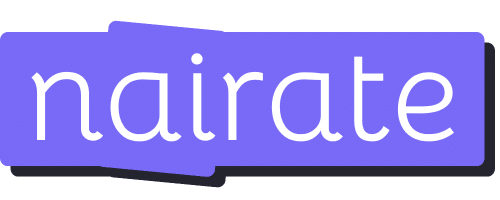



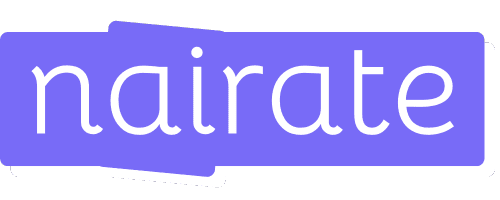
Add comment